From table salt to flaky sea salt and pink salt to truffle salt, we’re covering 19 types of salt and how to use them in this comprehensive guide!
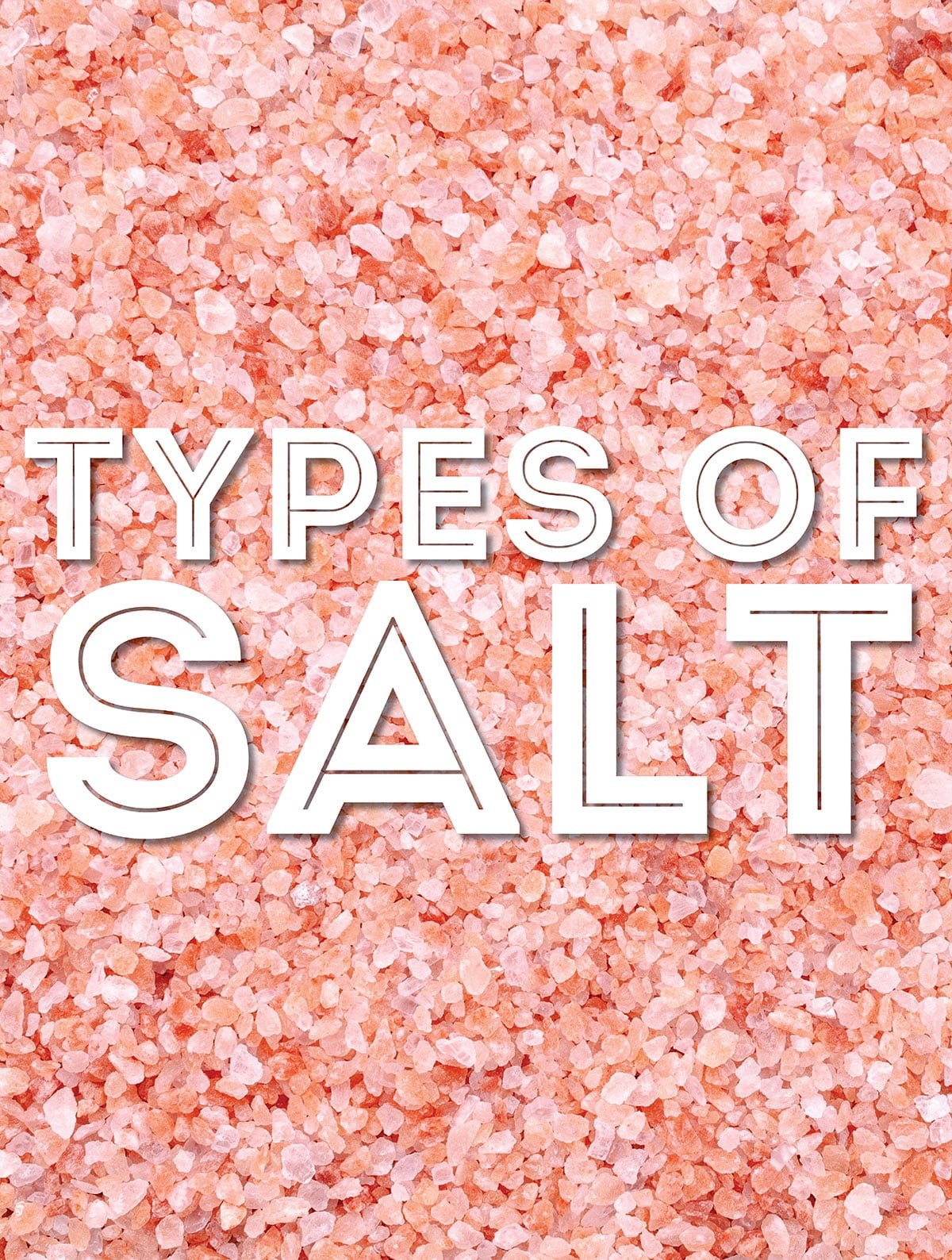
Salt is probably the most used spice in the world. It’s naturally occurring, helps sweets taste sweeter, and helps savory flavors really pop. As with any popular thing, there are numerous varieties of salt you can use depending on your culinary adventure.
What is Salt?
Chemically, salt (NaCl) or sodium chloride is made up of two elements, Sodium (Na) and Chloride (Cl). It’s a natural crystalline mineral that in its basic form is called rock salt. Once processed for purchase at the grocery it’s generally sold as table salt, or one of the other varieties we will cover. It’s probably the world’s oldest seasoning and food preservative.
General Rules of Salt
All salt has the same chemical makeup at its core, but how it’s cut will determine how salty it’s perceived to be.
In general, larger and courser salt will taste saltier because of the larger surface area that hits your tongue.
General table salt is super fine and therefore each grain is much smaller so less surface area to be salty. For this reason, you need a lot less flaky sea salt (or similar) than you would need table salt.
Different Types of Salt
Let’s look at 19 types of salt you can use in the kitchen, and what the best uses are for each. We will start with the most common and then list all others alphabetically.
- Table Salt
- Kosher Salt
- Sea Salt
- Black Salt (Kala Namak)
- Black Lava Salt
- Bolivian Rose Salt
- Brining Salt
- Celtic Sea Salt (Grey Salt)
- Flake Salt
- Flavored Salt
- Fleur de Sel
- Low-Sodium Salt
- Maldon Salt
- Pickling Salt
- Pink Salt (Himalayan Pink Salt)
- Rock Salt
- Seasoned Salt
- Smoked Salt
- Truffle Salt
Table Salt
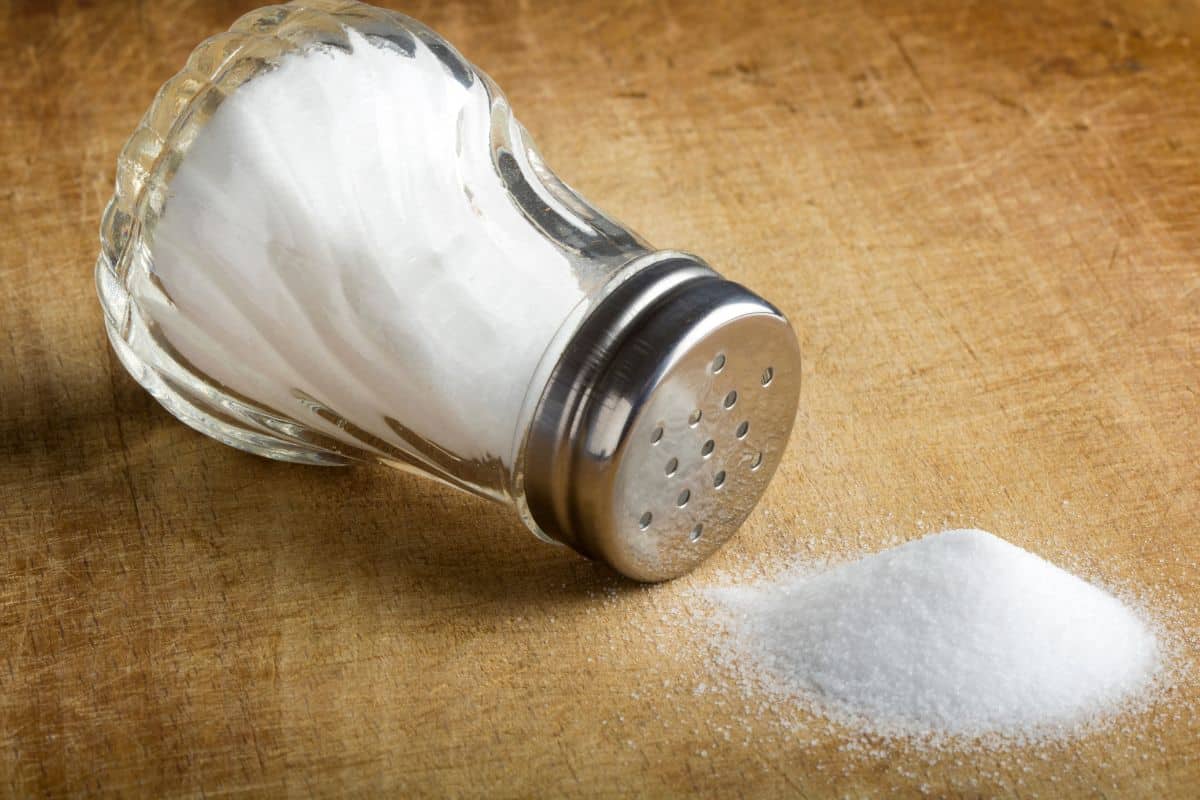
Description: Table salt, also known as common salt or refined salt, is the most common type of salt found in most households. It is highly refined and typically appears as small, uniform, fine-grained white crystals. It’s often iodized, meaning that it contains added iodine to prevent iodine deficiency. Table salt is typically extracted from underground salt deposits, and is widely produced around the world.
Best Uses for Table Salt: Table salt is a versatile seasoning used in a wide range of culinary applications. It enhances the natural flavors of dishes, and it’s commonly used for seasoning during cooking and as a condiment. It is ideal for both purposes.
Kosher Salt
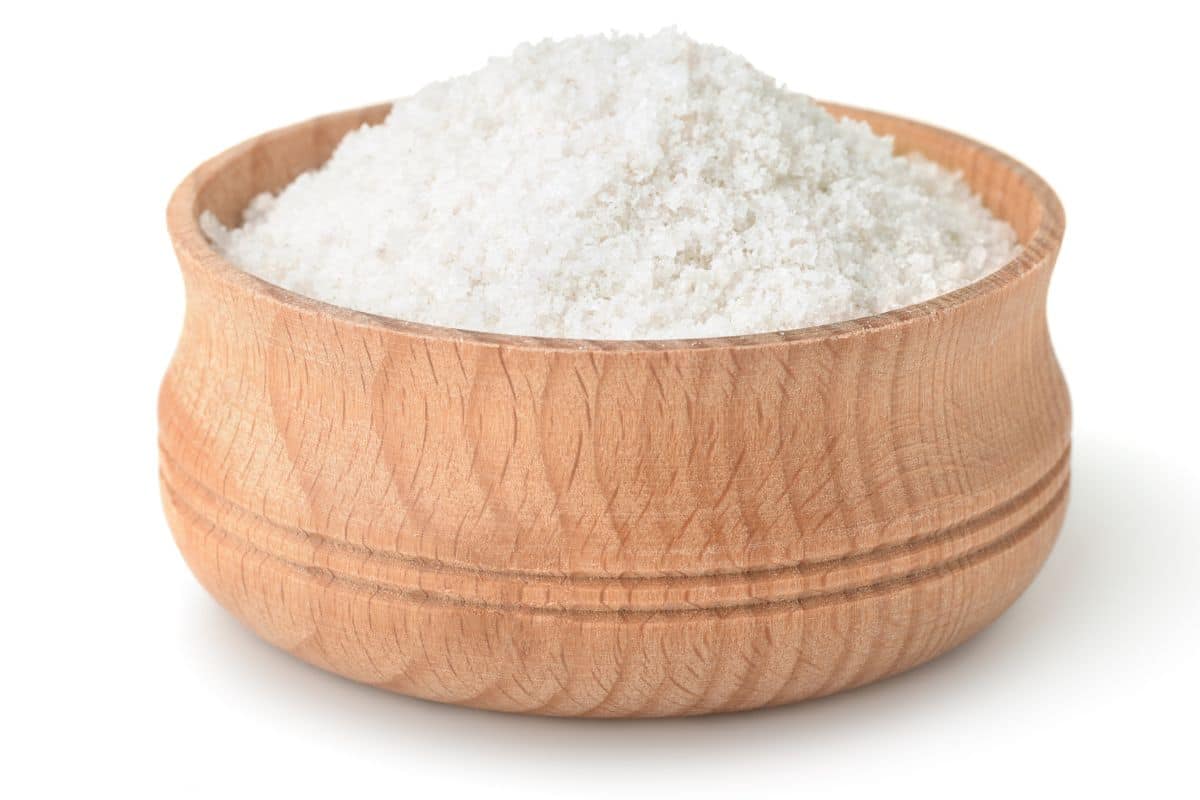
Description: Kosher salt has larger, coarser, and flakier crystals than table salt as it is less refined. It doesn’t contain any additives like iodine. The name “kosher” comes from its traditional use in the koshering process of meat. Kosher salt is typically derived from underground salt mines and is widely available in much of the world.
Best uses for Kosher Salt: Kosher salt is favored by chefs for its texture, which makes it easier to control the amount of salt being added to dishes. It’s commonly used for koshering meats, as the name suggests, but it’s also used in general cooking for seasoning meat, and vegetables, and even in baking due to its clean taste and ease of handling. Note that 1 tsp of kosher salt does not necessarily correspond to 1 tsp of table salt which is what most recipes are based on. A recipe calling for 1 tsp of salt will generally require 1 1/4 tsp of kosher salt (25% more) to achieve the same effect. Your best bet is to generally start with less salt and add to taste.
Sea Salt
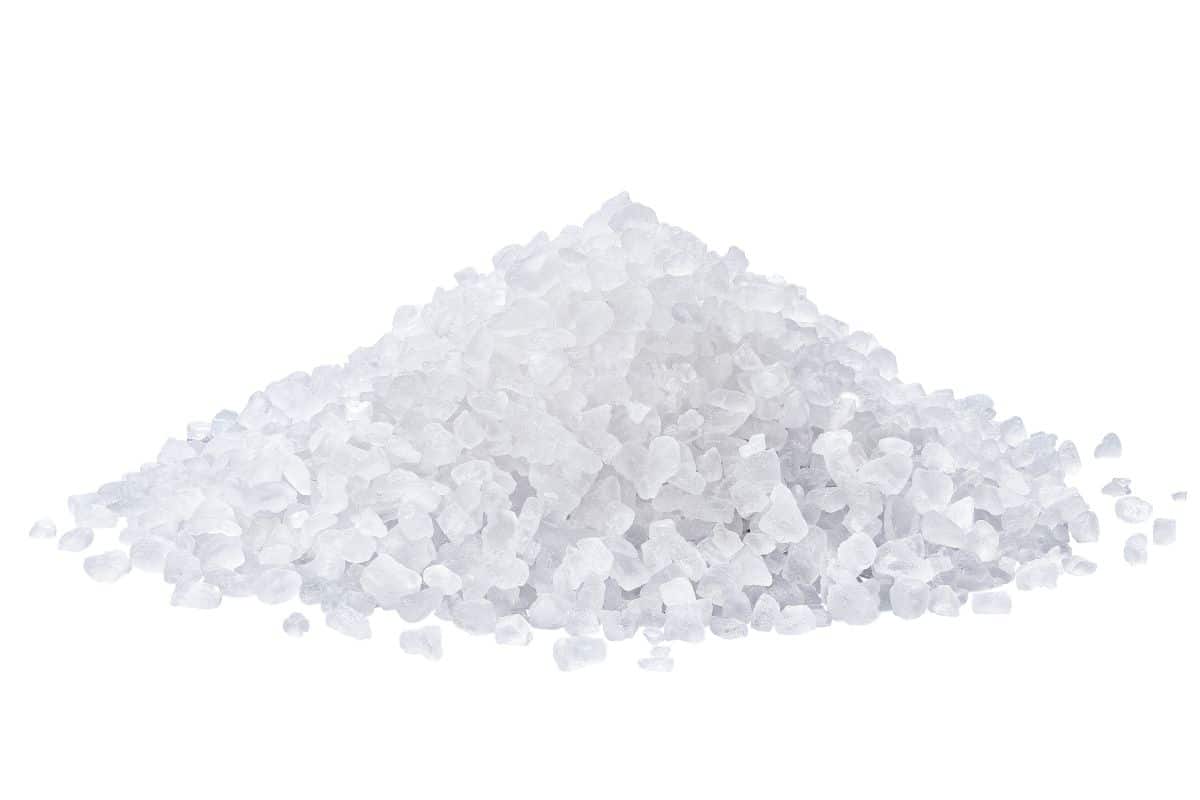
Description: Sea salt is produced by evaporating sea or ocean water, leaving behind the salt crystals. It varies in color and texture, often having a coarser, less refined appearance, and can come in various shades, including white, pink, and gray, depending on the source and impurities. It is produced globally and can be found in famous varieties like French Fleur de Sel and Himalayan pink salt.
Best Uses For Sea Salt: Sea salt is appreciated for its unique flavor and texture. It’s commonly used as a finishing salt, sprinkled on top of dishes just before serving to add a burst of flavor and a satisfying crunch. It’s also used in marinades and in brining, imparting a subtle briny taste to foods.
Black Salt (Kala Namak)
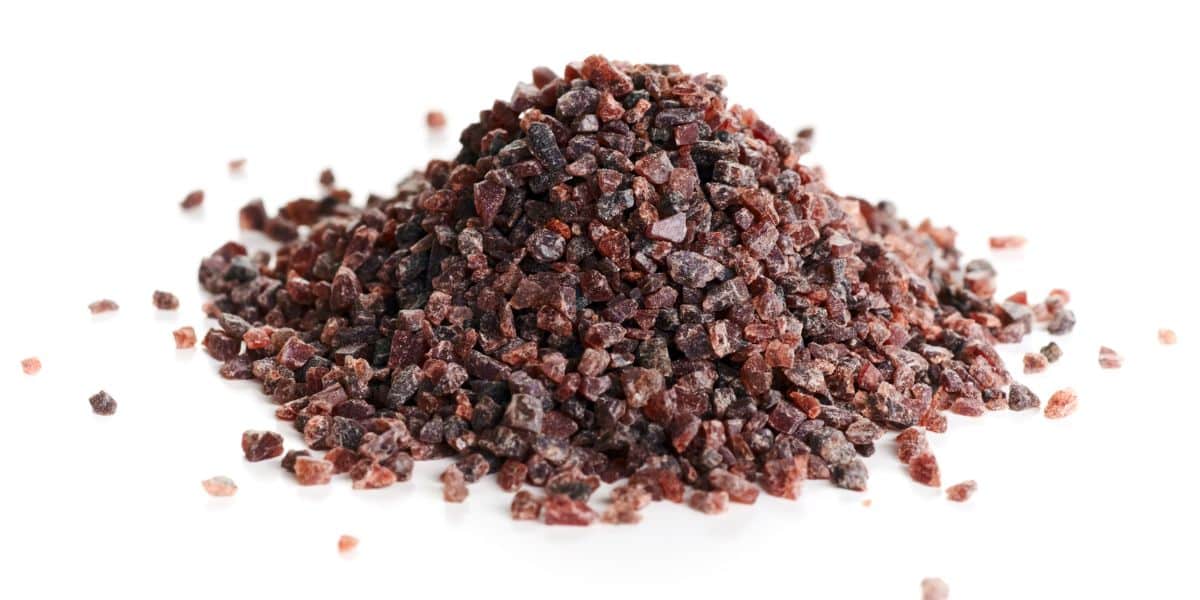
Description: Black salt, also known as Kala Namak, is a pungent-smelling condiment used in South Asian and Indian cuisine. It has a distinctive pinkish-grey to purple color and a strong, sulfuric odor, which is due to the presence of sulfurous compounds. Kala Namak is primarily sourced from regions in the Himalayan regions of Pakistan as well as India, Nepal, and Bangladesh. It is traditionally hand-harvested from volcanic rock and is very rich in a variety of minerals like calcium, magnesium, and iron.
Best Uses for Black Salt: It is primarily used in Indian cuisine like curry and other spicy dishes that require its pungent aroma and flavor. It is also sometimes used in vegan and vegetarian recipes to mimic the flavor of eggs due to its unique sulfurous taste. Kala Namak adds a savory and umami element to foods like chaats, chutneys, and tofu-based scrambles. If you can’t find it locally, just go to Amazon.
Black Lava Salt
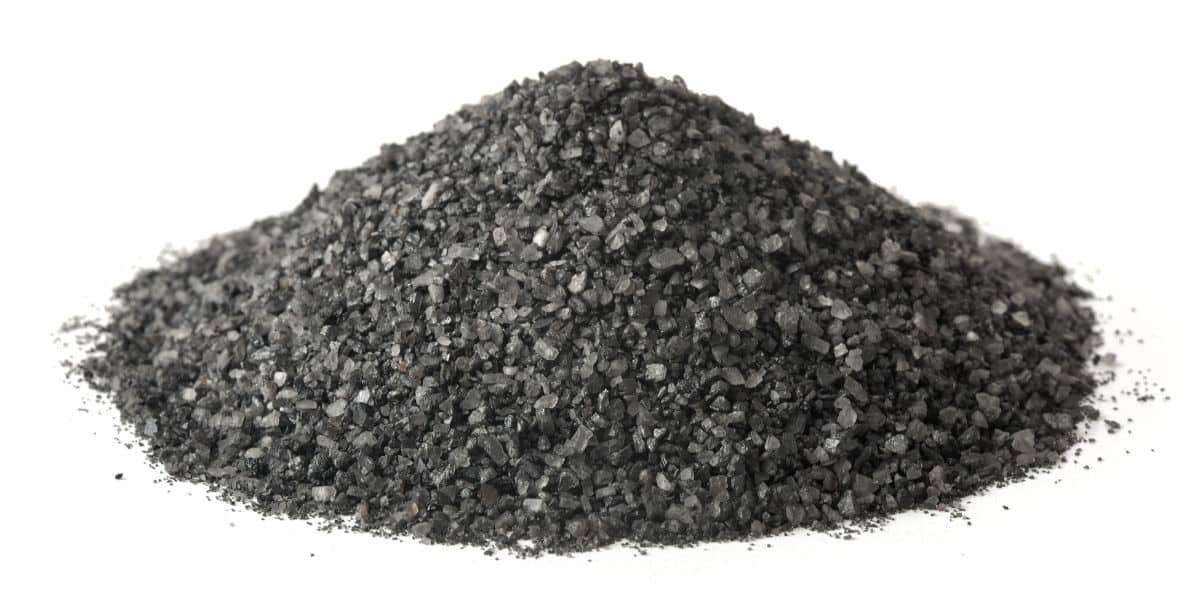
Description: Black lava salt, also known as Hawaiian black salt, is a sea salt harvested from the Pacific Ocean, typically blended with activated charcoal or volcanic minerals. It has a striking black color and a slightly smoky, earthy flavor. There is also a variety of this salt produced in Cyprus.
Best Uses for Black Lava Salt: Black lava salt is often used as a finishing salt to add visual contrast and a unique flavor to dishes. It pairs well with seafood, grilled meats, salads, and roasted vegetables. If you want to try it, just go to Amazon.
Bolivian Rose Salt
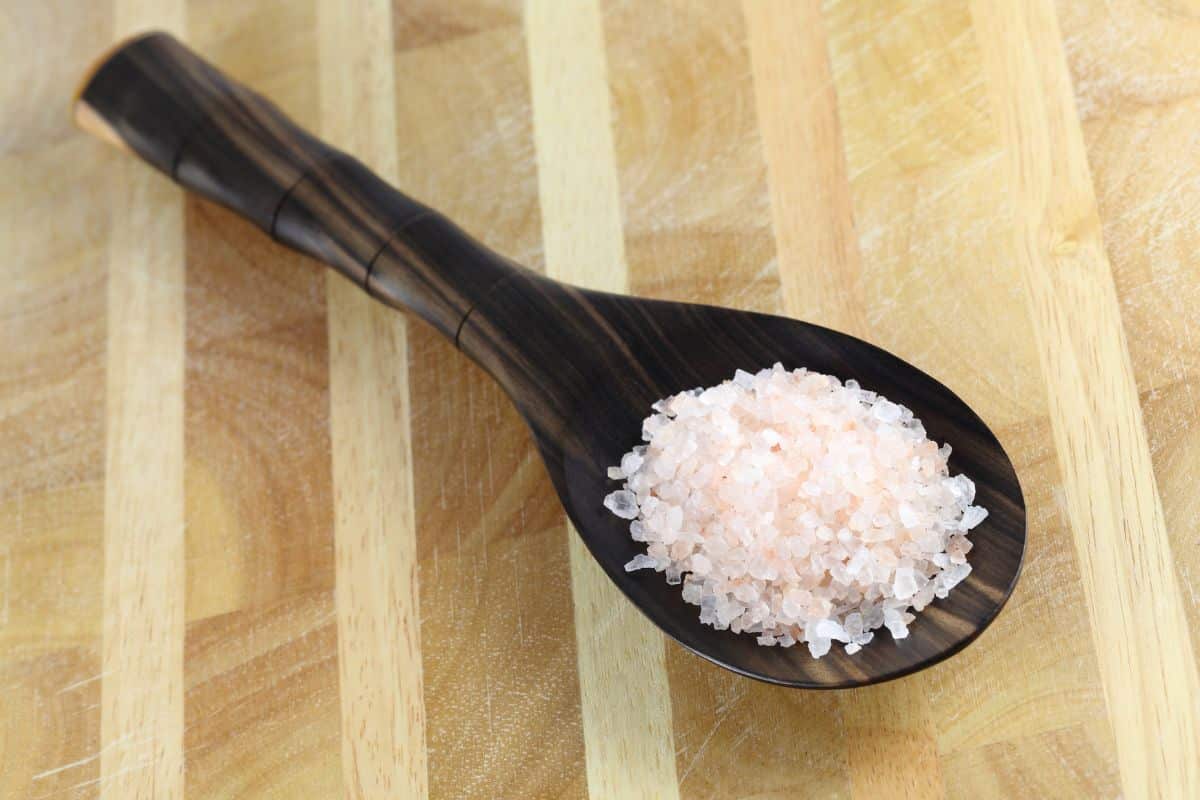
Description: Bolivian rose salt, sometimes referred to as Andean rose salt, is a pale pink salt that is harvested from salt flats in Bolivia. It gets its color from natural mineral contents, such as iron oxide. It is sourced from the Salar de Uyuni, the world’s largest salt flat, located in southwestern Bolivia.
Best Uses for Bolivian Rose Salt: Bolivian rose salt is often used as a gourmet finishing salt. It adds a delicate, mineral-rich flavor and a visually appealing touch to a wide range of dishes, including salads, grilled meats, and desserts. You can get in on Amazon.
Brining Salt
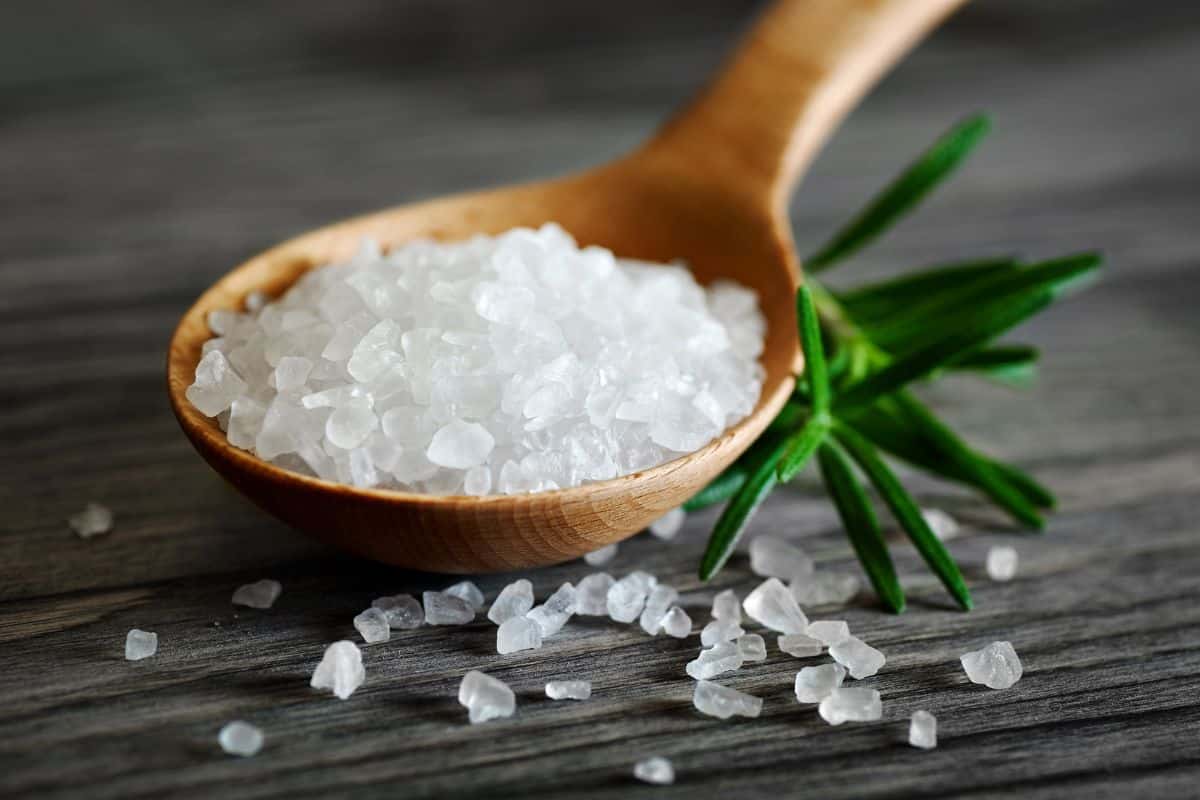
Description: Brining salt is a type of coarse salt used specifically for brining, which involves soaking meat or poultry in a saltwater solution. It is typically a pure, additive-free salt, sometimes with larger crystals to dissolve more slowly in the brine. Brining salt can come from various sources, but it is typically plain rock salt, kosher salt, pink salt, or sea salt that is specifically processed for brining.
Celtic Sea Salt (Grey Salt)
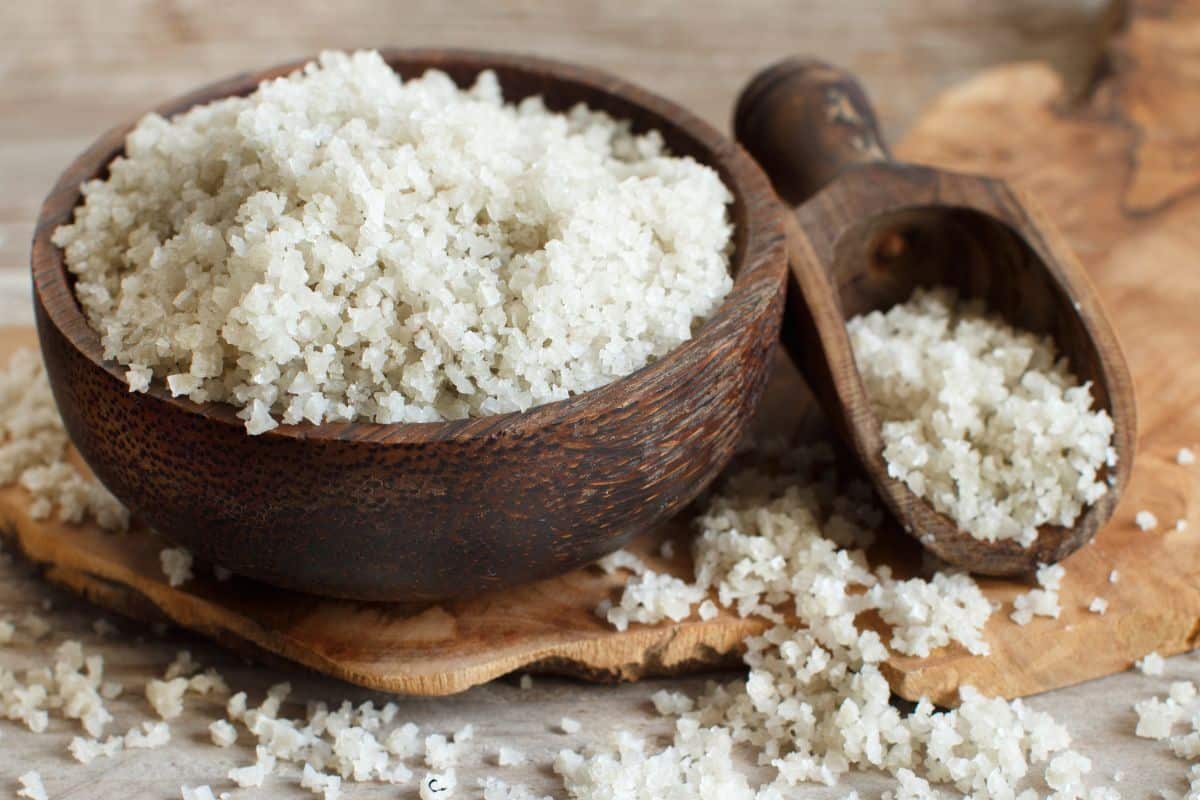
Description: Celtic sea salt, often referred to as grey salt, is harvested from the Atlantic Ocean, typically along the coast of Brittany, France. It gets its grayish color from minerals and clay in the salt ponds. It is a chunky mineral-rich salt that can provide some health benefits not found in table salt.
Best Uses for Celtic Sea Salt: Grey salt is often considered a high-quality, unrefined salt. It is used for seasoning, preserving, and enhancing the flavor of a wide range of dishes, including soups, stews, meat seasoning, picking, and baked goods. You can find it on Amazon.
Flake Salt
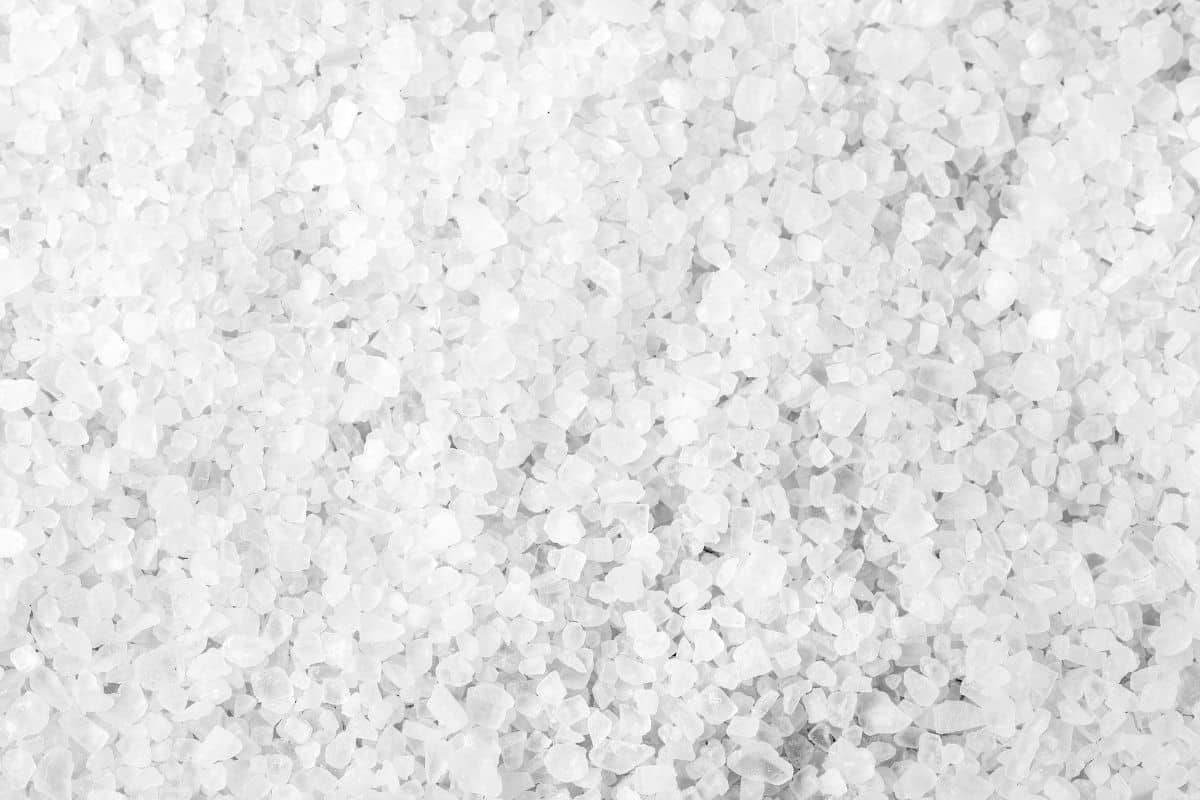
Description: Flake salt, as the name suggests, is characterized by its thin, flat, and delicate crystalline structure. These salt flakes are typically large and have a soft, flaky texture, and intensely salty taste. Flake salts can come in different varieties and colors, such as Maldon salt and sea salt flakes. Flake salt can be sourced from various regions around the world, with Maldon salt hailing from the UK and various sea salt flakes originating from coastal areas.
Best uses for Flake Salt: Flake salt is known for its mild, briny flavor and quick dissolving properties. It is often used as a finishing salt to sprinkle over dishes just before serving to enhance the flavor and provide a pleasing crunch. Its delicate texture and mild taste make it a great choice for enhancing the taste of high-quality ingredients, such as salads, seafood, and chocolate desserts.
Flavored Salt
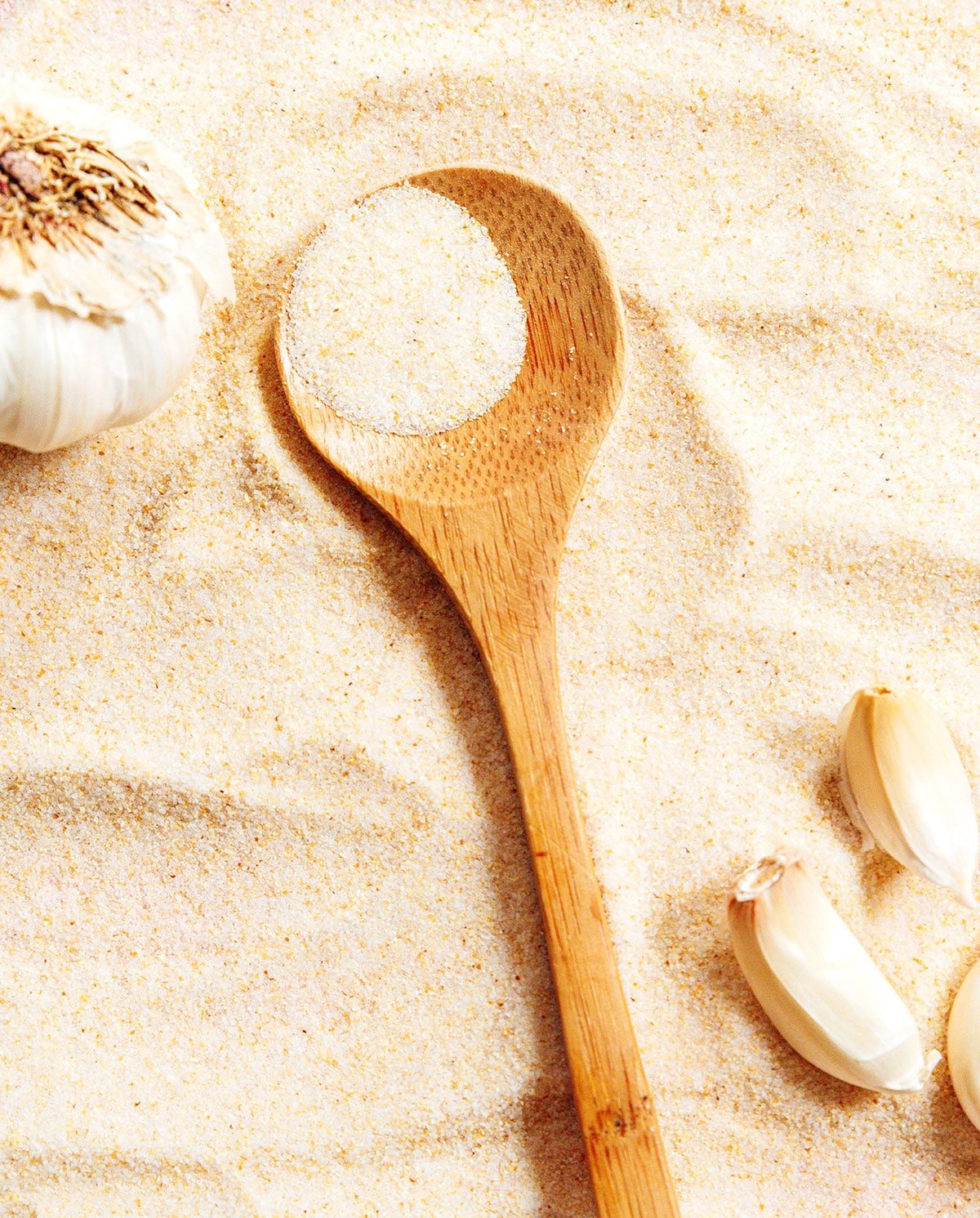
Description: Like seasoned salt flavored salts are a mixture of salt and a specific flavored seasoning created with the aim of producing a very specific taste. There is almost no end to the flavors you can buy commercially including Jalapeno, Chipotle, Espresso, Ghost Pepper, Lemon, Lime, Thai Ginger, Habanero, Rosemary, Vanilla, Garlic, and more. You can buy a wide variety of these at your grocery or on Amazon. We are particularly fond of our own homemade garlic salt.
Fleur de Sel
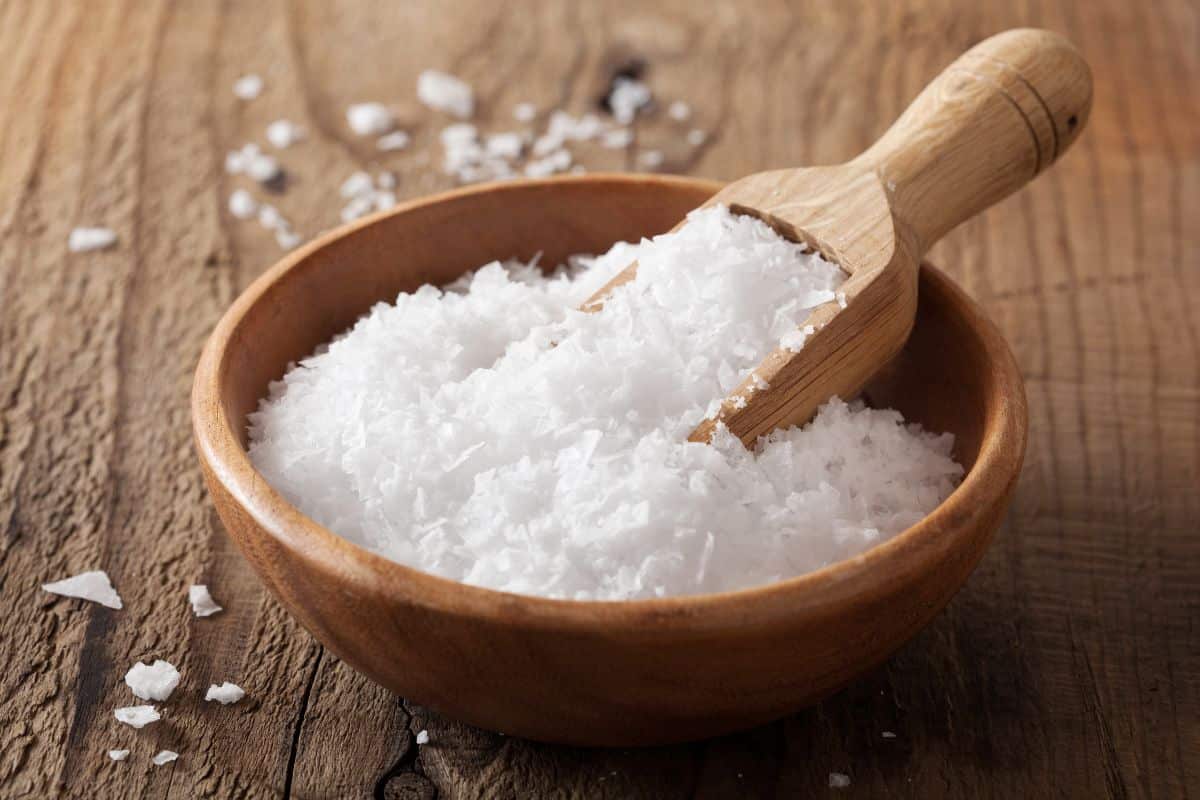
Description: Fleur de sel, translated as “flower of salt” in French, is a type of sea salt that is hand-harvested from the top layer of salt evaporation ponds. It is known for its fine, irregular crystals, slightly moist texture, and light briny taste. Fleur de sel is traditionally harvested from coastal regions in France, particularly Brittany and the Guérande region.
Best uses for Fleur de Sel: This is considered a premium gourmet salt. It is often used as a finishing salt due to its delicate flavor and texture. Sprinkled on dishes like fresh salads, grilled vegetables, or caramel desserts, it enhances the overall taste and adds a subtle, salty crunch. This is another specialty salt you may not find locally but can get at Amazon for a surprisingly reasonable price given its gourmet status.
Low-Sodium Salt
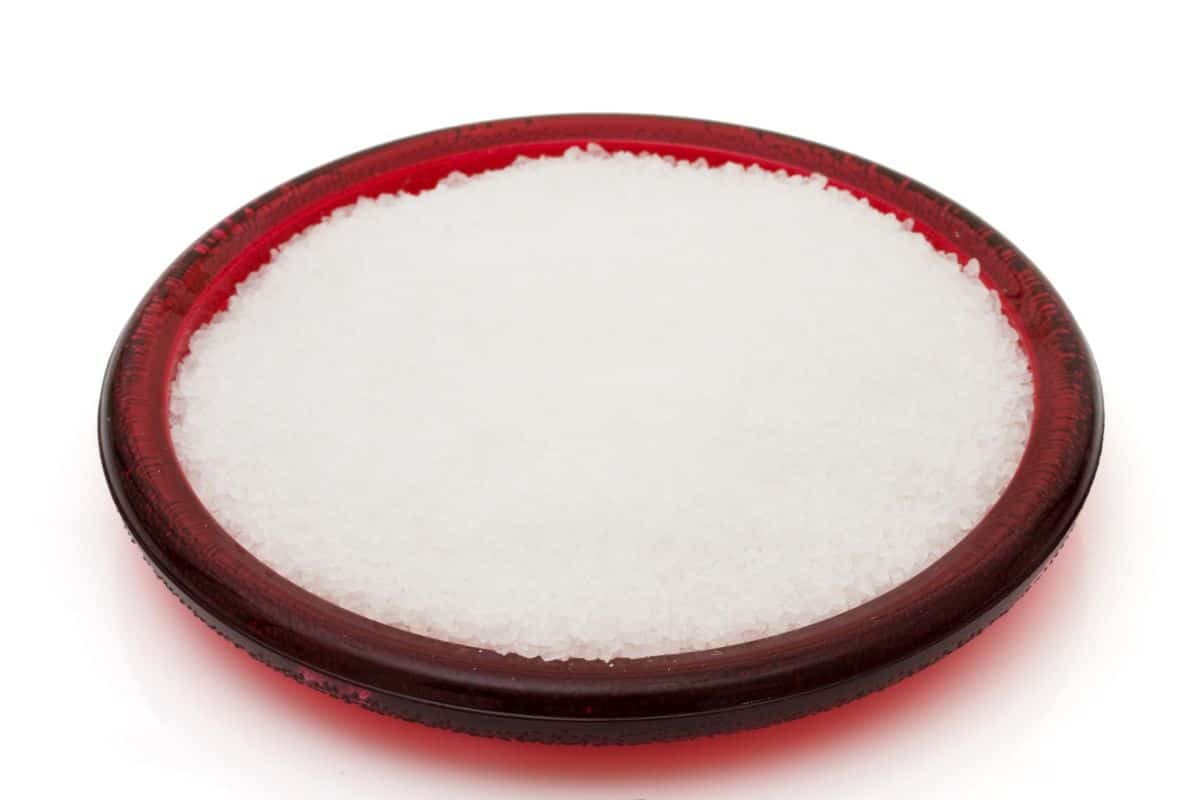
Description: Low-sodium salt, also known as reduced-sodium salt or potassium chloride salt, is a type of salt substitute designed to provide a salty flavor while reducing sodium content. It is typically a blend of potassium chloride and regular salt (sodium chloride). Low-sodium salt is a manufactured product and is not naturally occurring.
Best Uses for Low-Sodium Salt: This is the go-to product for individuals who need to limit their sodium intake, such as those with high blood pressure or heart conditions. It can be used as a salt replacement in cooking and seasoning.
Maldon Salt
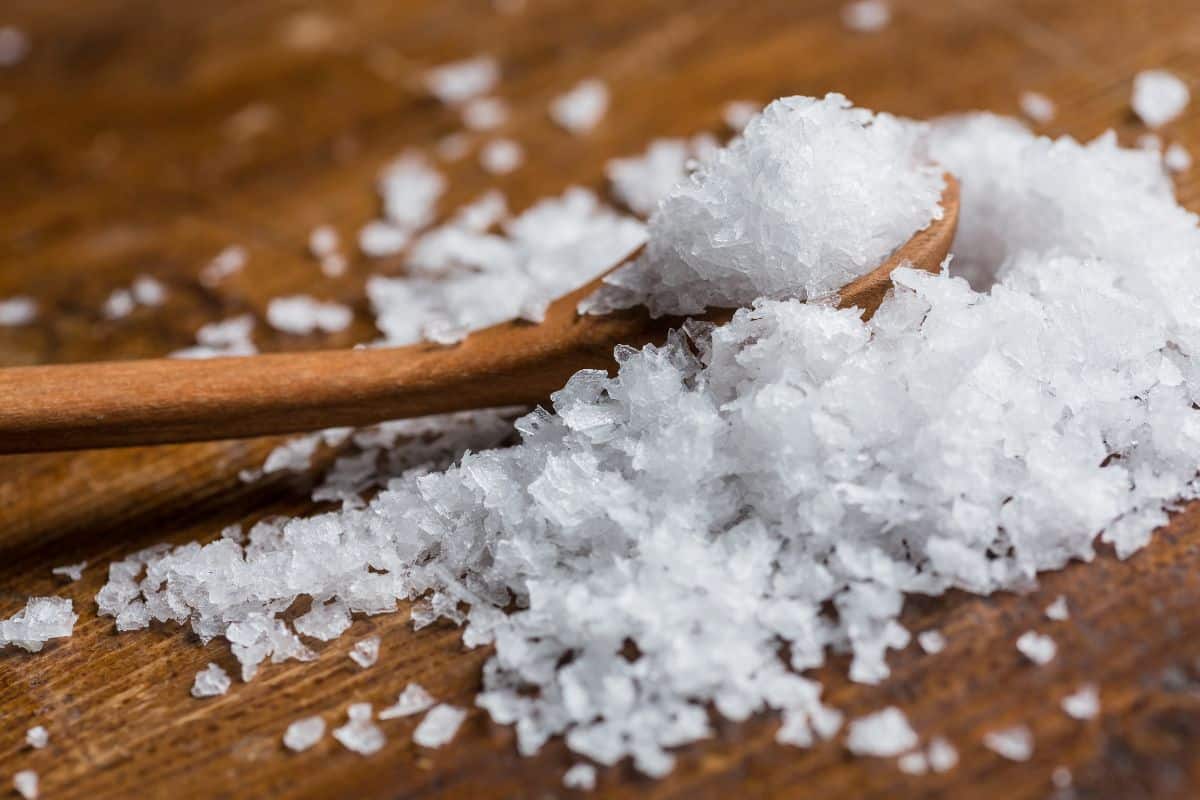
Description: Maldon salt is a variety of flake salt known for its distinctive pyramid-shaped crystals. It has a mild, clean taste with a delicate crunch. Maldon salt is harvested from the coastal town of Maldon in Essex, England.
Best Uses for Maldon Salt: It is often used as a finishing salt to add a burst of flavor and texture to dishes. It’s especially popular for enhancing the taste of grilled meats, vegetables, and even desserts like caramel or chocolate. Its unique texture and taste have made it a favorite among chefs and food enthusiasts. Like the other specialty salts, you can find it on Amazon.
Pickling Salt
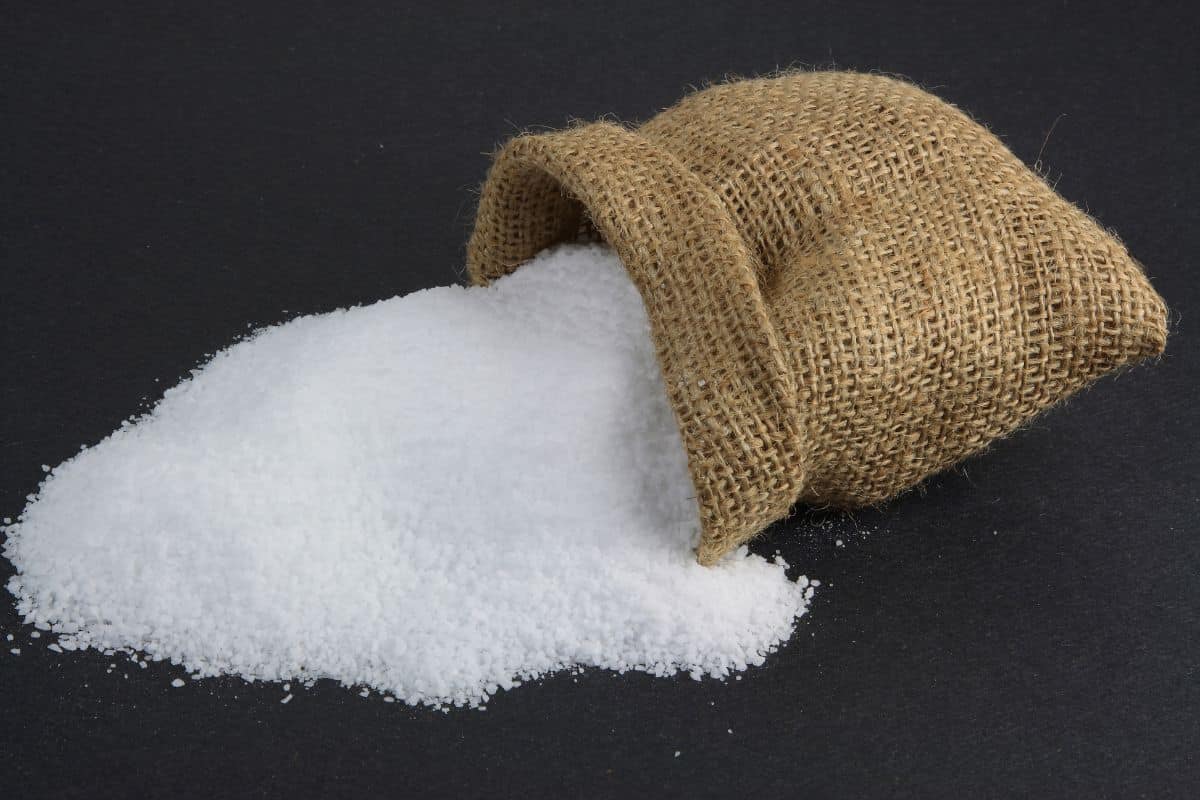
Description: Pickling salt, sometimes called canning salt, is a pure salt product that does not contain additives like iodine or anti-caking agents. It is finely ground to dissolve easily in liquids.
Pickling salt is specifically designed for preserving fruits and vegetables through the pickling and canning process. Its fine texture ensures it dissolves uniformly in brine solutions, preventing cloudiness and sediment in the final product. It’s not typically used as a table salt or for general culinary purposes but is crucial in pickling recipes.
Pink Salt (Himalayan Pink Salt)
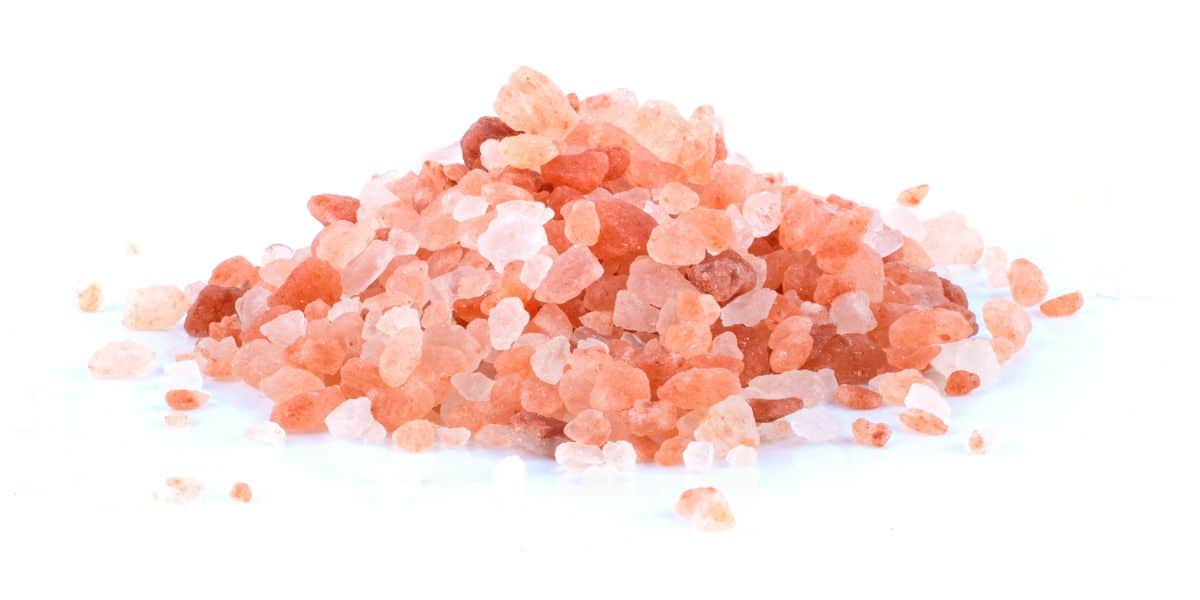
Description: Himalayan Pink Salt is a natural, unrefined salt that is known for its distinctive pink color, which is the result of trace minerals such as iron, zinc, and magnesium. It is typically sold in both coarse and fine grain sizes and is prized for its mild, nuanced flavor affected by its high mineral content. Himalayan salt is primarily sourced from the Khewra Salt Mine in the Punjab region of Pakistan, although it is also found in some neighboring regions of India. The salt is harvested from ancient sea beds deep within the Himalayan mountains.
Best Uses for Pink Salt: This salt is often used as a finishing salt, sprinkled over dishes just before serving to add a subtle mineral flavor and a touch of visual appeal. It can be used in a wide range of dishes, including meats, sauces, marinades, vegetables, and even desserts. Red Salt (Hawaiian Alaea Salt)
Description: Hawaiian Alaea Salt, often referred to as red Hawaiian salt or just red salt, gets its name and distinctive reddish-brown color from the iron-rich volcanic clay, or “alaea” found on the Hawaiian islands. It is a coarse salt with a slightly sweet and earthy flavor and is made by mixing sea salt with the local red alaea clay.
Best Uses for Red Salt: This salt is traditionally used to season and preserve meats and fish in Hawaiian cuisine. It’s also a fantastic seasoning for grilled or roasted meats, providing both flavor and visual appeal. It makes a nice contrast when sprinkled on white fish.
Rock Salt
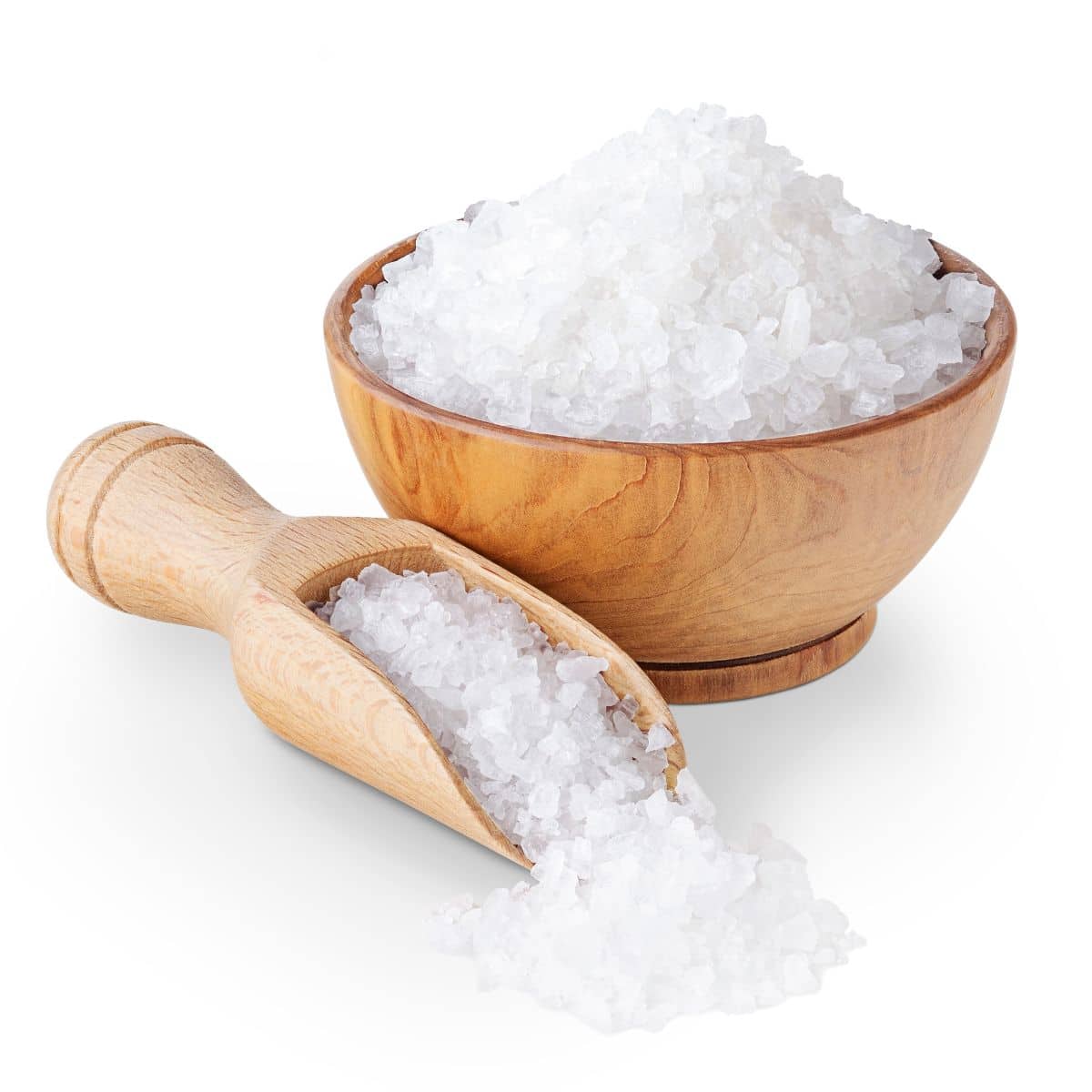
Description: Rock Salt is a coarse, unrefined salt that is typically found in a large, crystalline form. It is usually white or slightly off-white in color and is known for its purity and lack of additives. Rock salt is found in various regions around the world, and is generally mined from underground salt deposits. It is a widely available type of salt.
Best Uses for Rock Salt: Rock salt is often used for making brine solutions for pickling and curing foods, particularly meat and fish. It can also be used in some cooking techniques, like salt-crusted baking, where food is cooked encased in a layer of salt.
Seasoned Salt
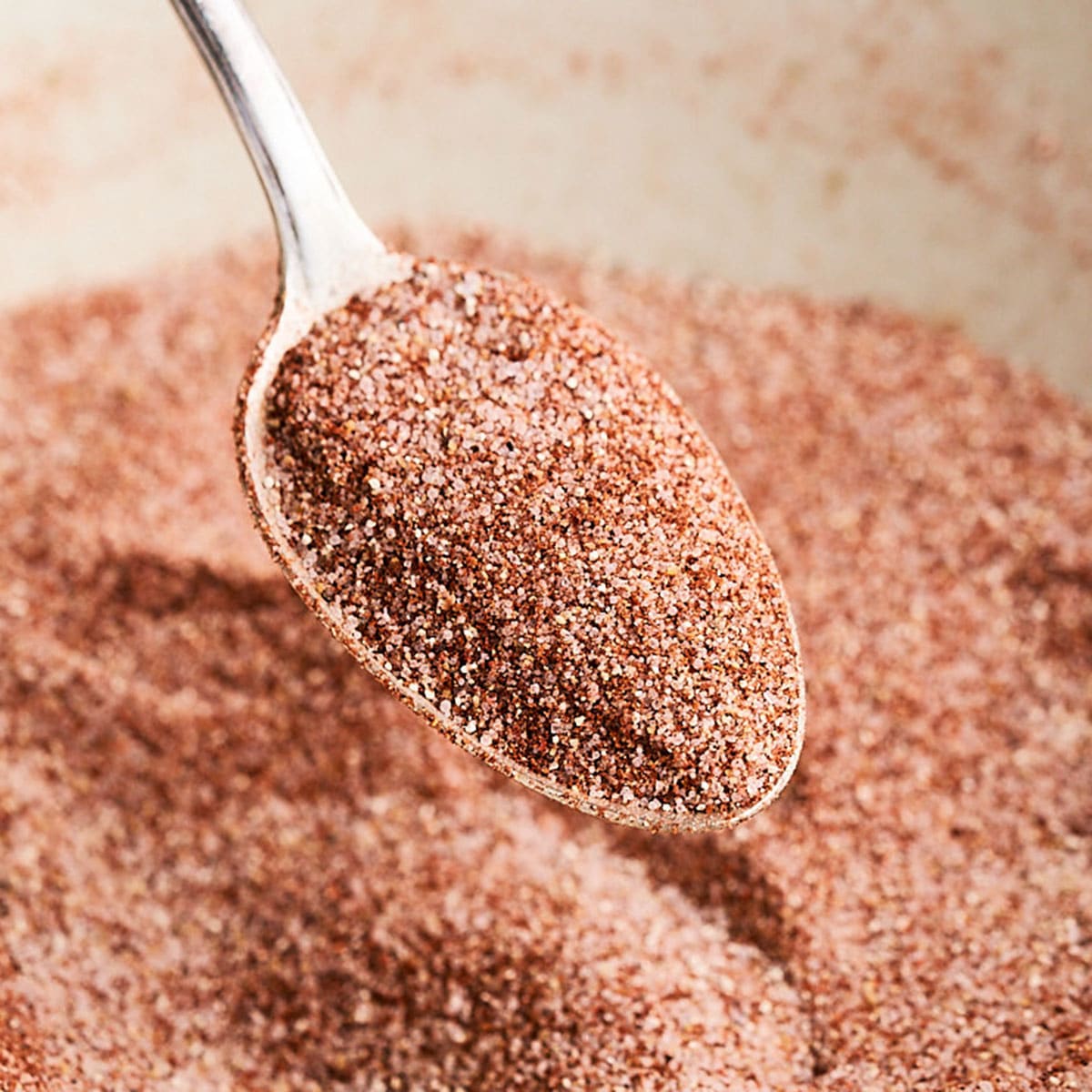
Description: Seasoned salt is a mixture of salt and various seasonings, herbs, and spices. Its appearance and texture can vary depending on the brand and recipe, but it often resembles fine-grained salt with visible herbs and spices. Seasoned salt is a product of culinary invention and is made in various regions worldwide. Its ingredients can be sourced from different places. (Here’s our recipe for Seasoned Salt (a Lawry’s copycat!)
Best Uses for Seasoned Salt: Seasoned salt is designed to add a burst of flavor to dishes. It’s a versatile type of seasoning used for a wide range of foods, including grilled meats, vegetables, soups, and more. It’s a convenient way to infuse various flavors into your cooking without the need to measure individual spices and herbs.
Smoked Salt
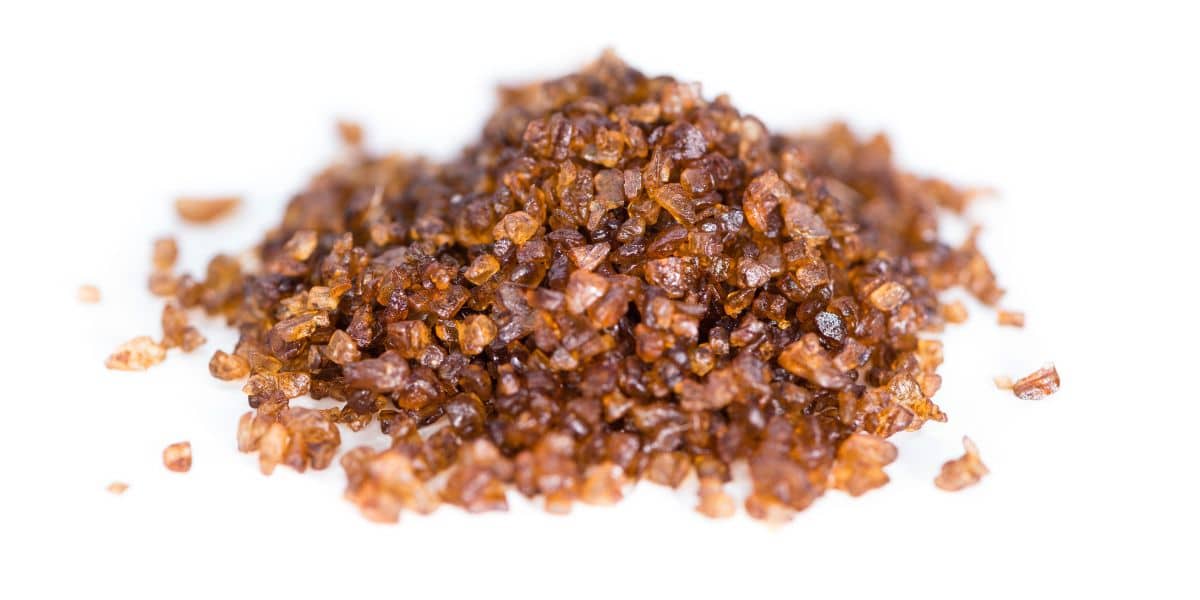
Description: Smoked Salt is a flavored salt that is infused with smoky aromas and tastes. It can be found in various colors, such as black, brown, or gray, depending on the smoking process and the source of the salt. Smoked salt is made by cold or hot smoking using regular sea salt or rock salt. The type of wood used for smoking can vary and affects the final flavor of the salt.
Best uses for Smoked Salt: Smoked salt adds a rich, smoky flavor to dishes, making it a popular choice for seasoning grilled meats, and roasted vegetables, and even as a finishing touch for soups and stews.
Truffle Salt
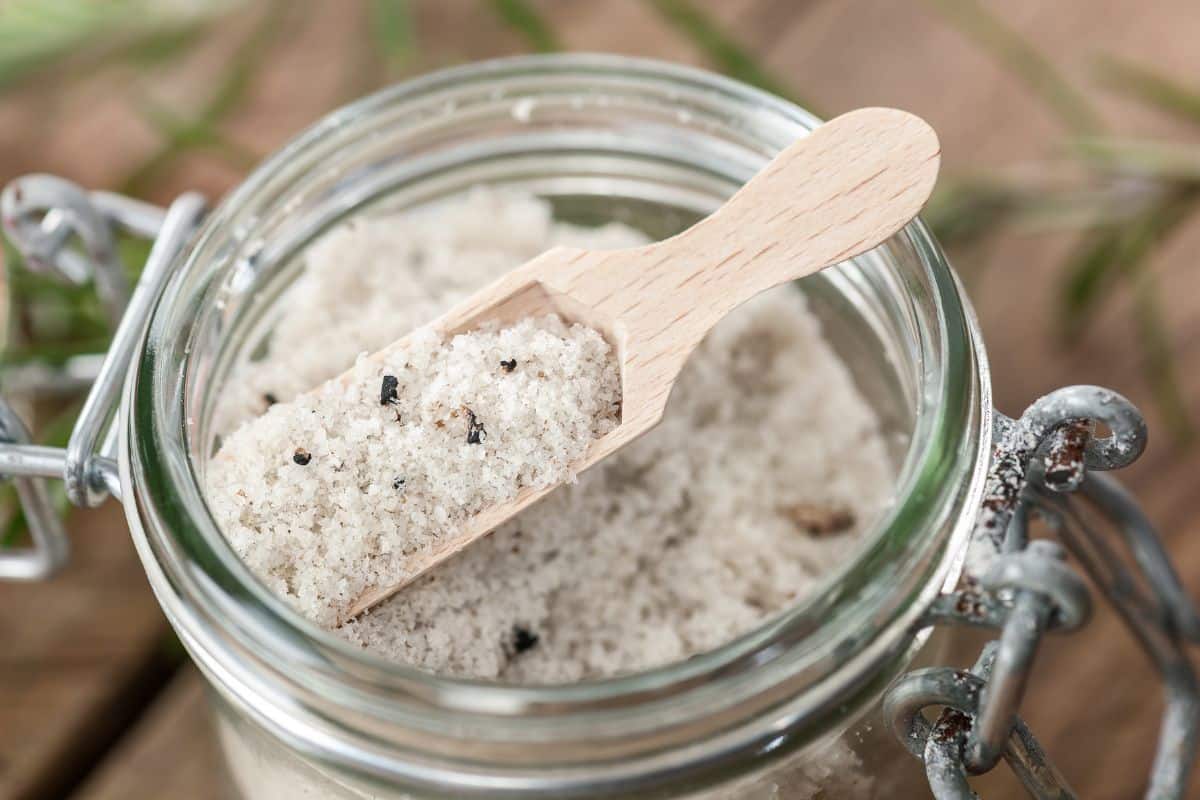
Description: Truffle Salt is a specialty seasoning made by combining sea salt with small pieces of dried truffles or truffle flavoring. It has a strong and distinctive aroma and flavor reminiscent of truffles. Truffle salt is a modern creation and is not tied to a specific geographical region. It is produced in various countries and regions, and the truffle flavoring can come from different types of truffles.
Best Uses for Truffle Salt: Truffle salt is used to impart the luxurious, earthy flavor of truffles to a wide range of dishes. It’s often used as a finishing touch for pasta, risotto, scrambled eggs, or even popcorn to elevate the flavor profile of the dish. If you have ever cooked with truffles, you know how insanely expensive they can be. While a little truffle goes a long way in cooking, truffle salt can be an inexpensive substitute, and you can get it on Amazon for a lot less than truffles.
History of Salt
Salt use is probably nearly as old as humankind, and historically has been almost as important as water. The first use probably came from coastal people “discovering” it in sea or spring water. The earliest archeological evidence of salt production dates back about 8,000 years to the region that is modern Romania where people appear to have boiled salty spring water to produce a solid salt. Similar evidence points to ancient salt works in China at about the same time.
Salt was important to ancient people not just to flavor food, but to preserve it. We have had refrigeration for only about the last hundred years, and canning for less than two-hundred. Before this, the primary way to preserve food was with salt. The ancient Greek, Roman, Egyptian, and well actually every major empire depended on salt, and trade in salt was extremely important.
Salt remains extremely important today, and we produce over 300 million tons of it annually! Salt is either mined or produced through evaporation of seawater or sometimes spring water.
Commercial Uses of Salt
Only a small percentage of the salt produced today is used for culinary purposes. Salt is used extensively in the production of chemicals like chlorine, plastics, paper, and a host of other products. It is also commonly used in road de-icing, and water softening.
Salt also remains very important in commercial food production as both a flavoring and a preservative. Most of the processed food we eat today contains sodium derived from salt.
Take for example canned mushrooms. 100g (3.5 ounces) of canned mushrooms typically contains around 470mg of sodium. 100g of fresh mushrooms, however, only contains 4mg of sodium. Without the sodium, canned mushrooms wouldn’t last very long. This reliance on sodium in processed food has clear health implications for consumers which we will get to next.
This wraps up our look at types of salt. We hope you found some new salt types you can work into our cooking, and as always happy cooking!
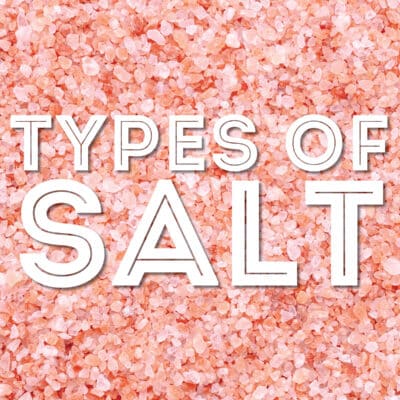
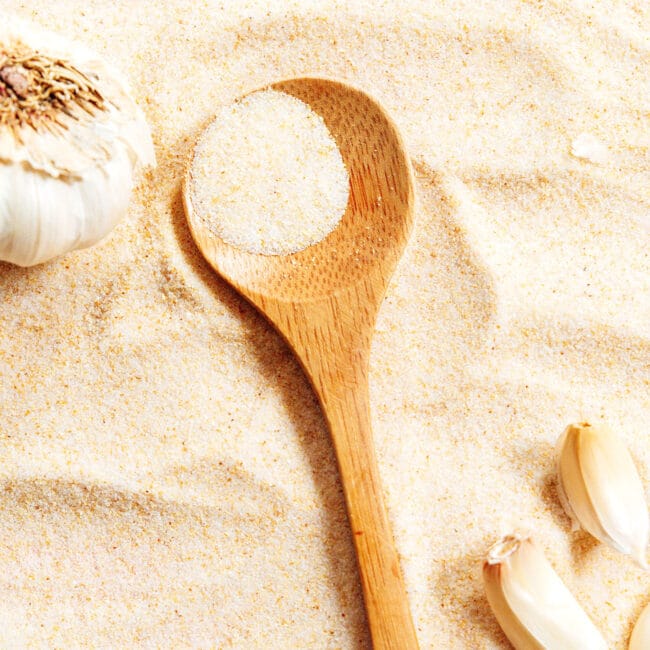
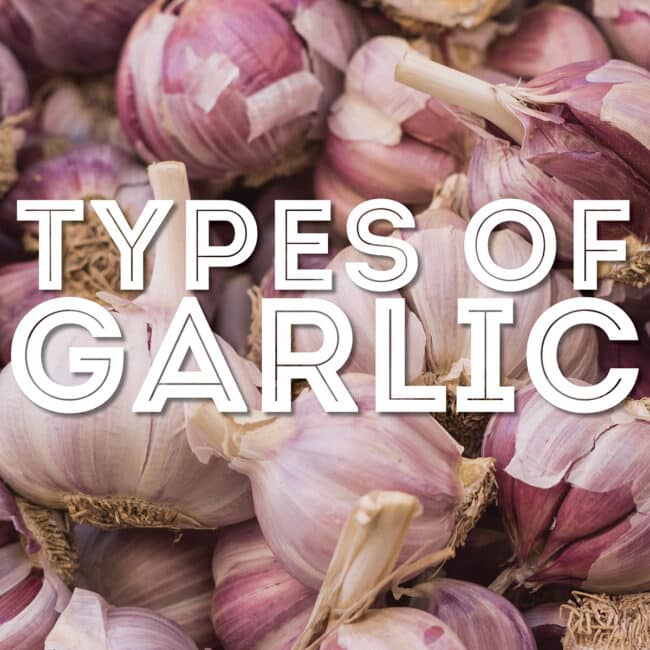
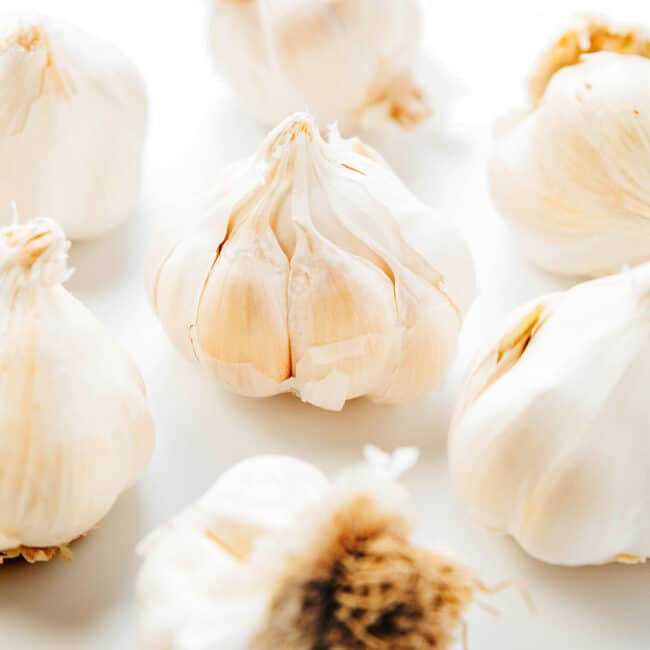
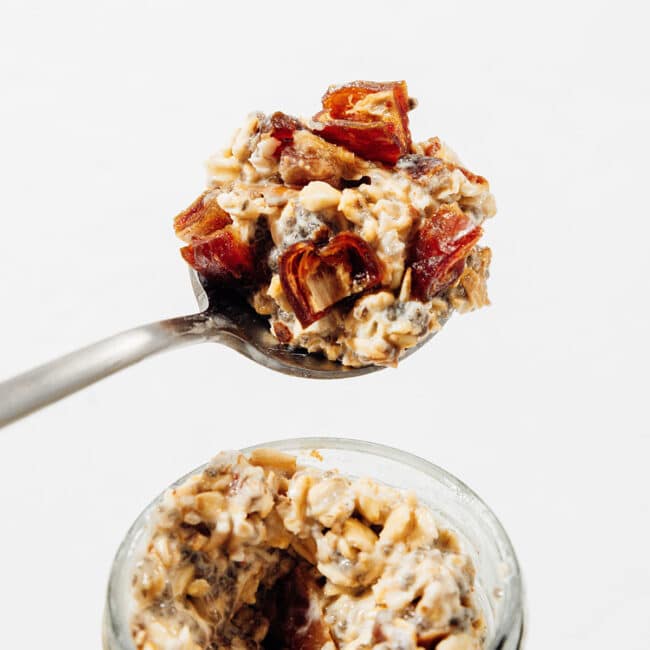
Craig Martin says
Actually, finer ground salt has more surface area and is therefore perceived as saltier. They addressed this in Salt, Fat, Acid, Heat.